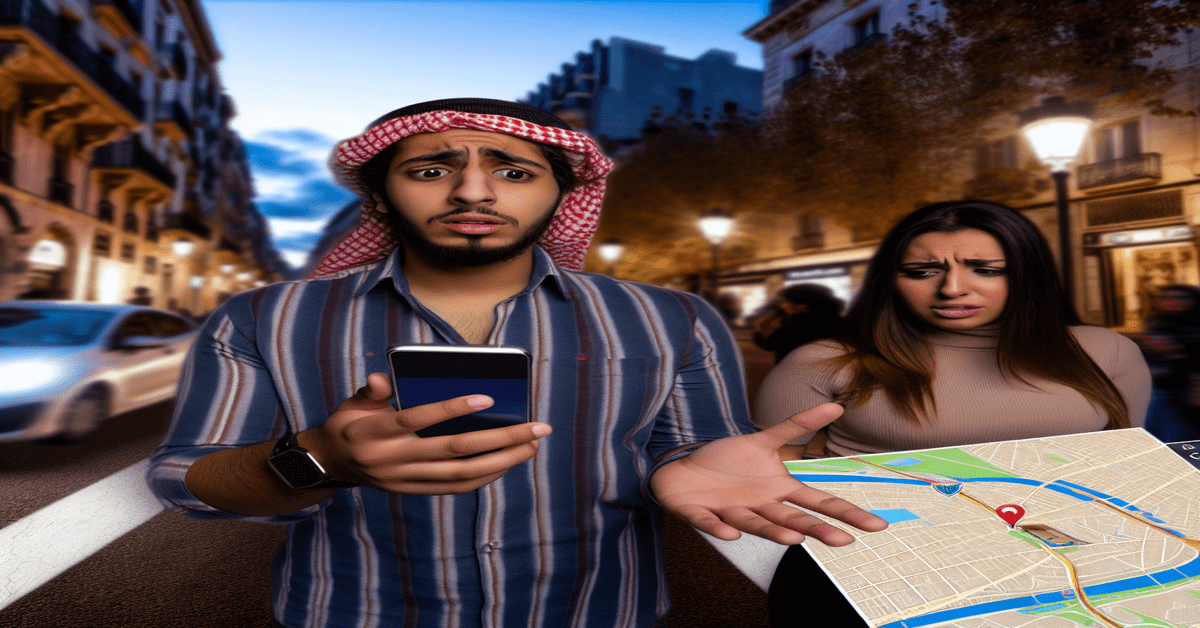The Perils and Pitfalls of Relying on Google Maps: When Technology Leads Us Astray
In today’s fast-paced, technology-driven world, we’ve become increasingly reliant on navigation apps like Google Maps to guide us through unfamiliar territories and help us reach our destinations efficiently. However, as convenient as these tools may be, they’re not infallible. In fact, there have been numerous instances where Google Maps has supposedly led people straight into troublesome situations, highlighting the potential drawbacks of blindly trusting technology.
The Limitations of Google Maps
While Google Maps is undoubtedly a powerful and helpful tool, it’s important to recognize its limitations. One of the primary issues with the app is that it relies on **digital map data**, which may not always be up-to-date or accurate. In rapidly developing areas or regions with frequent road changes, the information provided by Google Maps can become outdated, leading to confusion and misdirection.
Additionally, Google Maps is not immune to **technical glitches** or **system errors**. In some cases, the app may misinterpret user inputs, resulting in incorrect routes or destinations. These issues can be particularly problematic for those who are unfamiliar with an area and rely solely on the app for navigation.
Real-Life Experiences: When Google Maps Goes Wrong
There are countless stories of individuals who have found themselves in precarious situations due to the supposed misguidance of Google Maps. One such incident involved a group of friends who were traveling to a remote cabin in the woods for a weekend getaway. Despite inputting the correct address, Google Maps led them down a treacherous, unpaved road that was barely suitable for vehicles. The group ultimately had to abandon their cars and trek the remaining distance on foot, turning what should have been a relaxing trip into a stressful ordeal.
In another instance, a couple on their way to a wedding reception ended up in an entirely different city after following the directions provided by Google Maps. The app had apparently confused the street name with one in a neighboring town, causing the couple to miss a significant portion of the celebration.
These experiences serve as cautionary tales, reminding us that even the most advanced technology can be fallible and that it’s crucial to maintain a sense of awareness and intuition when navigating unfamiliar areas.
Google’s Response and Efforts to Improve
To their credit, Google is well aware of the potential issues with their Maps platform and has taken steps to address them. The company has a dedicated team that works tirelessly to keep map data current and accurate, relying on a combination of satellite imagery, **street-level photography**, and user-generated content to ensure the most up-to-date information is available.
Furthermore, Google has implemented a robust **incident management system** to handle service disruptions or performance issues. This includes monitoring for potential problems, investigating reported incidents, and communicating with users through various channels, such as the [Maps Public Status Dashboard](https://www.google.com/appsstatus#hl=en&v=status) and support groups.
Despite these efforts, it’s important to remember that no technology is perfect, and there will always be room for improvement. As users, we can contribute to the betterment of Google Maps by reporting any inaccuracies or issues we encounter, helping to create a more reliable and efficient navigation experience for everyone.
Navigating the Future: Balancing Technology and Human Intuition
As we move forward in an increasingly technology-dependent world, it’s essential to strike a balance between relying on digital tools and trusting our own intuition. While apps like Google Maps can be incredibly helpful, they should never be considered a complete substitute for human judgment and common sense.
When using navigation apps, it’s crucial to maintain awareness of your surroundings and to trust your instincts if something doesn’t feel right. If the route suggested by the app seems questionable or unsafe, don’t hesitate to seek out alternative options or consult with locals who may have a better understanding of the area.
Additionally, it’s always a good idea to have a backup plan in case technology fails us. Whether it’s carrying a physical map, familiarizing yourself with the general layout of your destination, or simply being prepared to ask for directions, having a contingency plan can help mitigate the potential pitfalls of relying too heavily on digital navigation tools.
The Road Ahead
As **technology continues to evolve**, it’s likely that navigation apps like Google Maps will become increasingly sophisticated and reliable. With advancements in artificial intelligence, machine learning, and real-time data processing, these tools will be better equipped to handle the complexities of our ever-changing world and provide more accurate and efficient guidance.
However, no matter how advanced these technologies become, it’s essential that we, as users, remain vigilant and approach them with a healthy dose of skepticism. By finding the right balance between technology and human intuition, we can harness the power of digital navigation tools while minimizing the risks of being led astray.
In conclusion, while Google Maps and other navigation apps have undoubtedly revolutionized the way we navigate the world, it’s crucial to recognize their limitations and potential pitfalls. By maintaining awareness, trusting our instincts, and being prepared for the unexpected, we can ensure that technology remains a helpful aid rather than a hindrance on our journeys through life.
#GoogleMaps #NavigationApps #TechnologyPitfalls #HumanIntuition
-> Original article and inspiration provided by ReviewAgent.ai
-> Connect with one of our AI Strategists today at ReviewAgent.ai


